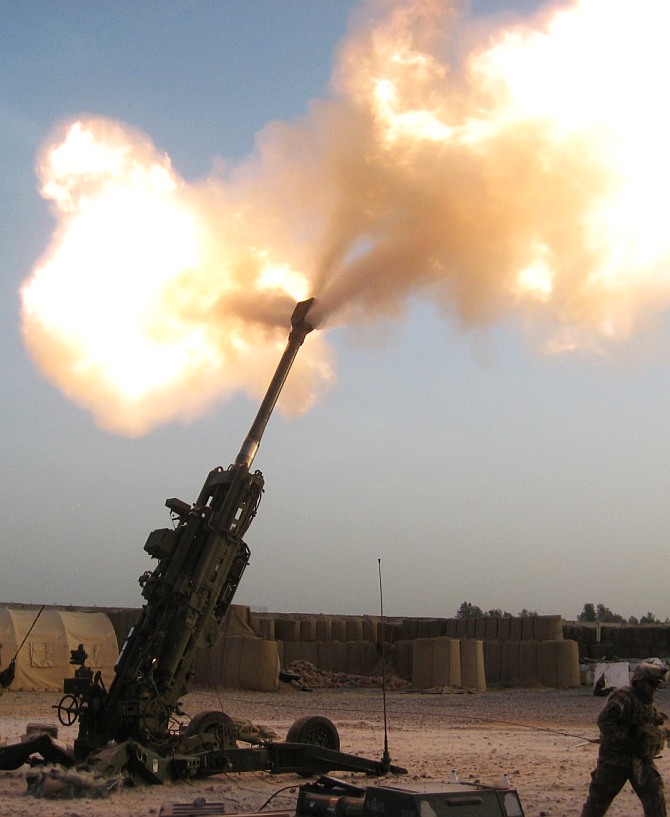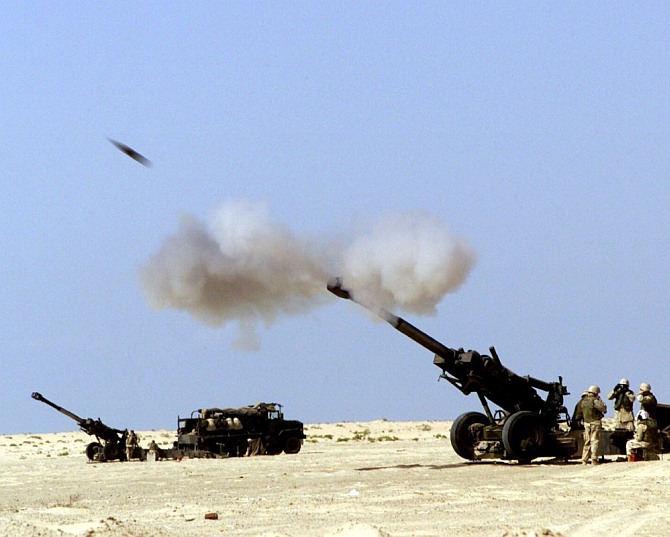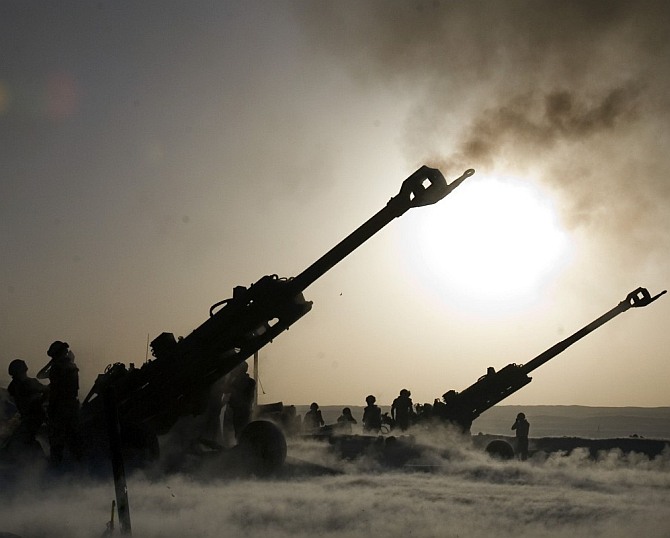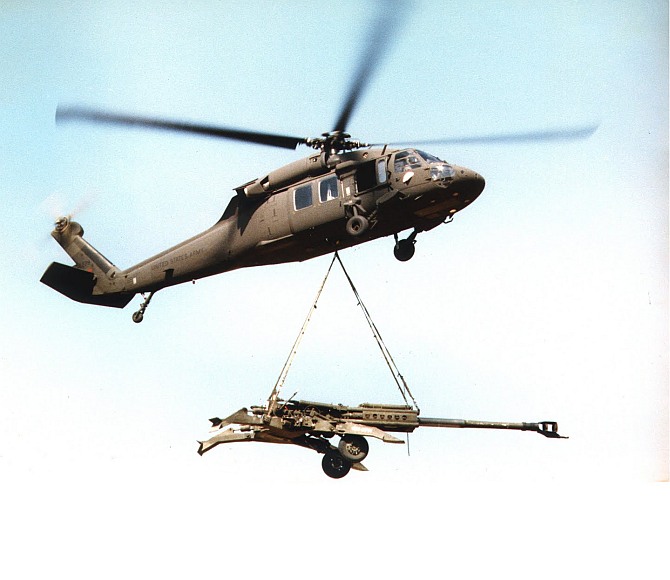 | « Back to article | Print this article |
Why US guns won't boom in India anytime soon!
For years, New Delhi and Washington have negotiated the purchase of 145 M777 howitzers. Ajai Shukla reports
The army's wait continues for a critical weapon system, the 155 millimetre ultralight howitzers, that are needed to provide teeth to the mountain divisions on the Sino-Indian border.
For years, New Delhi and Washington have negotiated the purchase of 145 M777 howitzers -- manufactured in the US by BAE Systems -- for a price that could now exceed $694 million.
Today, the new government has pronounced the US offer unacceptable.
For more defence news, Click here
Replying to a question in parliament, Defence Minister Arun Jaitley stated, “The case for procurement of Ultra-Light Howitzer (ULH) guns through US government has not progressed due to cost issues and because the vendor has not been able to come up with a proposal fully compliant to the offset requirements.”
New Delhi is negotiating the purchase directly with Washington because the guns are being bought through the Foreign Military Sales (FMS) programme.
In this, the US Department of Defence (Pentagon) sells weaponry directly to buyers, negotiating terms with the supplier (in this case BAE Systems) and charging the buyer government a small fee for its services.
Click NEXT to read further...
Why US guns won't boom in India anytime soon!
Business Standard learns that the ministry of defence is displeased that the Pentagon has raised the cost of the gun.
In early 2010, in a Letter of Acceptance issued in response to an Indian request for the guns, the Pentagon had quoted $647 million. Three years later, in March 2013, it issued a fresh LoA, raising the price to $694 million
In October 2013, even that offer expired.
On August 7, in keeping with US laws, the Pentagon had re-notified the US Congress about the deal.
Superseding its notification of January 26, 2010, which had priced the deal at $647 million, the new notification mentioned a price of "up to $885 million"
Senior Pentagon sources clarify that the $885 million cost is the "upper limit of the price envelope", in case the deal takes years longer.
If it is finalised quickly, they say the cost might not be much more than the $694 million in last year's LoA.
Click NEXT to read further...
Why US guns won't boom in India anytime soon!
Production on the BAE Systems production line in Hattiesburg, US, closed down last year.
Company sources say restarting the line and re-certifying suppliers of sub-systems involve a cost.
A company spokesperson told Business Standard, “BAE Systems maintains its readiness to produce the combat-proven M777 for US government sales to the government of India.”
Top Indian Army generals have publicly stated that the shortage of modern artillery would be a crucial drawback in any future war, especially in the mountains.
India’s 220 artillery regiments (with 18 guns each) have guns procured in the 1970s and 1980s.
With overseas purchases repeatedly tendered and cancelled, and with the ghost of the Bofors scandal lurking over any artillery procurement, the MoD has now begun an indigenous process for obtaining guns.
Click NEXT to read further...
Why US guns won't boom in India anytime soon!
The Ordnance Factory Board has been asked to manufacture 140 artillery guns of 155 millimetre/45 calibre.
Meanwhile, the Defence R&D Organisation is partnering the private sector in developing and manufacturing modern 155 millimetre/52 calibre artillery guns.
The procurement of the M777 was further delayed by the blacklisting of its competitor, the Pegasus howitzer offered by Singapore Technologies Kinetic (STK).
That has made the M777 purchase a "single-vendor contract", which has tended to make the MoD tread cautiously.




